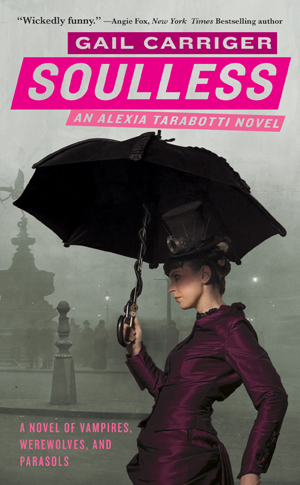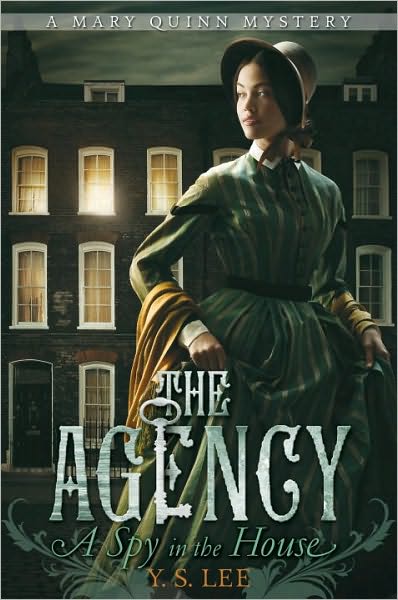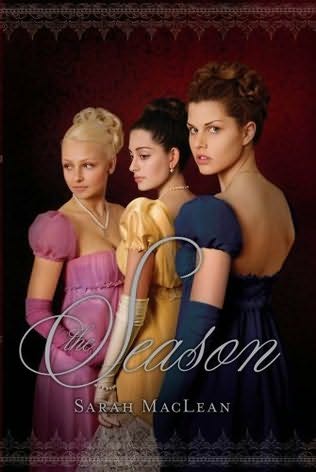Book Review: The Queen of the Love Triangles, or Clockwork Prince by Cassandra Clare
I checked my Goodreads account for verification, and my instincts were right that I've had Clockwork Prince by Cassandra Clare on my "to-read" shelf since the cover debuted back in September. I've been teetering on a razor's edge since then in anticipation, since I am head over heels in love with the Infernal Devices series (I love it much more than Mortal Instruments, but more on that later).My December 2nd (my half-birthday, FYI) was characterized by my driving home, leaping out of the car before it came to a full stop, grabbing the Amazon box insouciantly leaning against the door with its smile/arrow, and racing inside for a full-fledged cardboard frenzy. My husband looked on indulgently, wisely not trying to talk to me during this episode, only to perk up as I was squealing at the cover (it is even more AWESOME in person than what you see on screen). His response was along the lines of "Wait, isn't that the next one in that series? When do I get to read...." *voice fading as I run upstairs to hide book from him*. Sorry, sweetheart. Librarians first.
I decided to reread Clockwork Angel first, since I remembered that, as with all Cassandra Clare novels, it was an intricately plotted work with a decent amount of characters (nothing a reader can't handle) and lots of Victorian England references. I wanted it all fresh in my mind for when I tackled the next book in the series.
It was a good thing I did (husband is re-reading it as we speak in preparation for Clockwork Prince). Not only did I enjoy it tremendously, but it reminded me how much I liked and admired Tessa as a protagonist who is trying to find out - literally - who and what she is. Kidnapped in a nefarious plan involving her brother who has moved from New York to London ahead of her, Tessa finds herself in the custody of two horrifying women and forced to regularly shape-shift, a talent she didn't know she possessed.
Saved by Shadowhunters, Tessa is brought to their home, known as the London Institute, quickly becoming a part of their lives because she is a Downworlder, or supernatural creature, although what kind of Downworlder no one really knows. At first she is kept with them out of kindness and the fact that she obviously holds the key to understanding a potential threat, but relationships begin to form. While searching for her missing brother, Nathaniel, she finds herself having feelings of friendship toward the gentle and handsome James Carstairs while his best friend William Herondale stirs up more tumultuous emotions. Diving deep into the parts of London where the occult overlaps the mundane world, Tessa is faced with the forbidding knowledge that someone knows more about her than she does about herself - and that they want her at any price.
In Clockwork Prince, Tessa is still a hot property, pursued by the "Magister" who continues to develop frightening clockwork automatons to serve his evil intentions. Her brother continues to be at large and seems to have an insider from the Institute working with him. Will is possessed by the desperate need to push Tessa away while secretly enlisting the help of warlock Magnus Bane (who is a fabulous character that only gets better with a better acquaintance) to determine the origins of his "curse." Will's family situation is revealed with startling results, but his alienation of Tessa has unforseen consequences as she and Jem (James) become closer, igniting feelings in Tessa which begin to compete with her turbulent feelings for Will. Political machinations in the Shadowhunter world add dimension and layers to a fabulous story.
Tessa vs. Clary. I think a big reason I love Tessa as a protagonist (versus Clary who really gets on my nerves - a lot, see mini-rant below*) is not only due to her love of literature and poetry, a love she shares with Will, but the fact that she wants to find answers to her questions - questions about herself, her family, about Jem's addiction and Will's family problems, about what the Magister is really up to and about what the Shadowhunter world is doing to the people she cares about at the Institute. Tessa is curious, in the best possible way because she wants to use her knowledge to help the people she cares about. She makes Clary seem like an intellectual lightweight. I'd love to see a Clary/Tessa cage match. Clary might be a Shadowhunter, but Tessa has real grit and the shape-changing thing.
It's Gaslight not Steampunk. Here's an interesting tidbit. The unbelievably talented Meljean Brook, author of The Iron Duke (a favorite steampunk reread of mine) and Heart of Steel as well as some great novellas, has an equally as arresting blog and she published the following image which blew my mind. In past blog posts, I had categorized the Infernal Devices series as steampunk because of the clockwork automatons. Was I wrong! It turns out that steampunk with acknowledged supernatural elements (like the vampires, werewolves, and warlocks of Clare's Shadowhunter world) make the book fall into the gaslight genre. I love this name (it sounds so much more romantic, doesn't it?) and I would say that with my love of paranormal, I would probably rank my love of gaslight above my love of steampunk.
Queen of Love Triangles...and Love Scenes. I honestly wish that Clare wrote adult books because her ability to write love scenes that sizzle is BAR NONE. Clare even says, "All my books are, in some sense or another, love stories. And complicated, passionate, maybe-it-will-work-out-maybe-it-won't romance is my favorite kind." I read plenty of adult romance and the ability to truly capture yearning and sexual tension is actually very hard to do. Passion, yes. The physicality of who is touching what when, you bet - plenty of authors do a terrific job of doing just that. But yearning, aching, heart-stopping, breath-stealing yearning is very rare and extremely special.
A big piece of why she is so good at this is her concept of who romantic characters should be.
There is little sexier than watching someone excel at something they do extraordinarily well — the difference between a bad boy is that they know they do it really well and that it’s turning you on; the good boys don’t. And there should be a dash of vulnerability. Your boy doesn’t have to be tormented but the girl or boy who he loves has to be able to get under his skin and pierce that armor, or it’s no fun. (Cassandra Clare from Malinda Lo's interview with her.)Combine this piece with her propensity for compelling gay/bi characters and Clare becomes an author who understands love and passion in all its forms. I adored Magnus Bane in the Mortal Instruments series (its wonderful to watch the progression of his relationship with Alec and his patient understanding waiting for Alec to come out to his parents has my total devotion) and the friendship and assistance he offers to Will in this series continues to develop his complex character.
*Mini-rant* After rereading the first three of the Mortal Instruments series in preparation for reading the fourth book, City of Fallen Angels, I had to actually put the book down and not finish it. I want to go on record as saying I unequivocally admire Cassandra Clare and love her writing, but she does something that really bothers me as a reader. She tortures her characters.
I'm totally serious about this. It often feels like no one is allowed to just be happy and this makes me crazy. I'm not saying anyone would enjoy reading about happy people, but I think it's perfectly reasonable to have characters who can actually be happy in a relationship while tumultuous, horrifying things (like armies of scary clockwork automatons after you, for example) are happening to you and the person you love. I am not trying to infer that I don't enjoy a juicy love triangle with the best of them, but I find myself emotionally wrung out after reading them. Mortal Instruments gave me nightmares and I ended up really getting cranky with Clary, although I know it's not her fault the poor thing isn't given a moment's peace. I'm absolutely going to pick up the book again and read it, but now I'm annoyed that I have to be in a more patient mood to do it. *end mini-rant*
Cassandra Clare is a fantastic author who ranks high on my list of all-time fantasy/action/gaslight greats. A wonderful bonus to those who admire her is the fact that she is also an author who regularly reflects on the writing process and her craft (in addition to feeding us terrific tidbits about upcoming books and ideas). Her blog is one I always enjoy reading in my Google Reader as a result of this outlook. Other great sources of information about Clare's work is her Twitter account since she posts regularly, and her Facebook page. Pick the source of information that best fits your fandom.
There are plenty of great future books we can look forward to:
May 2012 - City of Lost Souls (Mortal Instruments series)
September 2013 - City of Heavenly Fire (last in the Mortal Instruments series) and Clockwork Princess (the last in the Infernal Devices series)
Clare has spoken of a future series, The Dark Artifices, set five years after the last Mortal Instruments book (so around 2018) which would be set in the Los Angeles Institute (Clare lived in L.A. when she was an entertainment writer). Since Mortal Instruments characters would presumably be in their twenties, she has said she could envision them doing cameo appearances so we can see how they are doing.
Suffice it to say, my Goodreads account is always going to include Clare's books on my to-read list, subsequent cardboard frenzy guaranteed.





























































